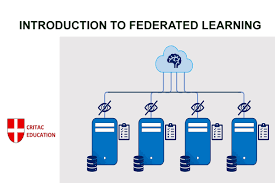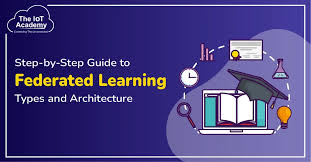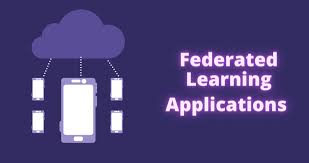comprehensive guide to Federated Learning: Revolutionizing Privacy-Preserving Machine Learning 2024

Machine learning (ML) has revolutionized various industries, but its potential has often been limited by concerns over data privacy and security. Traditional ML models typically require centralizing large amounts of data on a server to train, creating challenges related to data sharing, privacy risks, and communication costs. Federated Learning (FL) is a breakthrough technique that addresses these concerns, allowing machine learning models to be trained across decentralized data sources without moving sensitive data from its original location.
In this blog, we will dive into the core concepts of Federated Learning, how it works, and its real-world applications across various industries.
What is Federated Learning?

Federated Learning is a distributed machine learning approach that enables multiple clients (such as mobile devices or edge devices) to collaboratively train a shared model without the need to exchange their raw data. Instead of sending data to a central server, each client trains a local model and only shares model updates with the central server. These updates are then aggregated to improve the global model, which is distributed back to the clients for further training.
This approach helps preserve data privacy while still enabling global model optimization, making it ideal for industries where sensitive data cannot leave local devices, such as healthcare and finance.
There are several reasons why Federated Learning is gaining traction in the machine learning landscape:
- Data Privacy: Since raw data never leaves the client’s device, sensitive information remains secure. This is especially important in industries like healthcare, where patient privacy is paramount.
- Efficient Communication: Instead of transferring large amounts of data, federated learning only sends model updates (which are much smaller than raw data). This reduces the communication overhead between devices and servers.
- Lower Latency: As data processing occurs on the edge devices, the inference can be made faster without the need to rely on cloud-based computation, which is critical for real-time applications.
- Reduced Data Transfer: By keeping data on the client-side, federated learning minimizes the need to transfer data over the internet, saving bandwidth and energy, making it ideal for IoT and mobile devices.
How Does Federated Learning Work?
Federated Learning operates through a multi-step process involving local training, model aggregation, and iterative updates:
- Local Training: Each client (device) trains a local model using its own data. This process is done independently, without sharing the data with other clients or a central server.
- Model Updates: After local training, the clients send only the updated model weights (not the raw data) to a central server.
- Aggregation: The server aggregates the model updates from all clients (using methods like Federated Averaging) and creates a new global model.
- Model Distribution: The updated global model is then sent back to the clients, where it will be further trained with the next round of data.
This cycle of local training and global aggregation continues iteratively, improving the model’s performance while maintaining privacy and minimizing data movement.
Types of Federated Learning

There are different ways in which federated learning can be implemented based on the nature of data and clients involved:
- Cross-Device Federated Learning: In this approach, millions of mobile devices or IoT devices participate in the training process. Each device trains a local model using its data and shares model updates with the server. This approach can deal with non-IID data (data that is not identically distributed across devices) and handles large-scale systems.
- Cross-Silo Federated Learning: This involves organizations or institutions (such as hospitals or banks) training models across their distributed data silos. The clients in this case are fewer in number and typically represent entities such as different organizations, making the data more homogeneous.
- Federated Transfer Learning (FTL): This technique enables federated learning in cases where the data on different clients doesn’t overlap or share the same feature space. FTL allows for knowledge transfer across different domains, improving the model performance even when data is highly diverse.
Applications of Federated Learning

Federated Learning is being applied across multiple domains where privacy, data security, and distributed systems are critical. Some notable applications include:
1. Healthcare
Federated Learning enables collaborative medical research without sharing sensitive patient data. For example, medical institutions can collaboratively train AI models for disease prediction (like brain tumor detection) while maintaining the privacy of patient records. Intel and the University of Pennsylvania have partnered to apply Federated Learning in detecting brain tumors by collaborating with global healthcare institutions without the need to share private medical data.
2. Mobile Devices
Mobile device manufacturers like Google and Apple leverage Federated Learning for personalized services like keyboard predictions and voice recognition. In applications such as Gboard, Federated Learning helps improve next-word prediction and emoji suggestions while keeping the user’s data private. Apple’s Siri also uses Federated Learning to improve its voice recognition models while ensuring that the raw audio data never leaves the user’s device.
3. Financial Services
Federated Learning can be applied in the financial sector for collaborative fraud detection models, enabling banks and financial institutions to work together without sharing sensitive transaction data. This can lead to more accurate fraud detection while preserving the privacy of customers.
4. Autonomous Vehicles
Federated Learning enables the training of machine learning models for self-driving cars. Vehicles can collaboratively learn about road conditions, traffic patterns, and driving behaviors without sharing raw sensor data, making the models more robust while ensuring the privacy of driving data.
Challenges in Federated Learning

While Federated Learning has numerous benefits, there are challenges that need to be addressed:
- Non-IID Data: In Federated Learning, the data across clients can vary significantly, which can hinder model convergence and performance.
- Communication Overhead: Although Federated Learning reduces data transfer, the frequent sharing of model updates can still lead to significant communication costs, especially in large-scale systems.
- Security and Privacy: Although data remains on the client-side, Federated Learning is still susceptible to model poisoning and data inference attacks. Ensuring robust security mechanisms is essential to prevent these threats.
Future of Federated Learning
The future of Federated Learning is bright, with potential applications in many emerging fields. As new techniques such as Federated Transfer Learning, differential privacy, and secure aggregation evolve, the ability to train machine learning models on distributed, privacy-sensitive data without compromising performance will become increasingly feasible.
As 5G networks and edge computing grow, Federated Learning will become even more integral to real-time data processing and intelligent decision-making on devices that cannot rely on cloud-based computation.
Conclusion
Federated Learning is transforming the way machine learning models are trained, allowing for the development of privacy-preserving, collaborative AI systems. By enabling training across decentralized data sources, Federated Learning enhances privacy, reduces communication overhead, and opens up new possibilities for applications in healthcare, finance, and beyond.
With ongoing advancements in security, privacy mechanisms, and scalability, Federated Learning will continue to play a significant role in shaping the future of machine learning, ensuring that AI can be both powerful and respectful of user privacy.